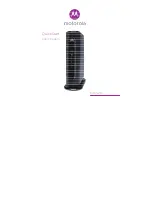
d15 Modem Integration and Application Developers Guide version draft 0.53 Page 38 of 181
3.5 ESD consideration
In general the ESD is very well protected using ceramic capacitors of 0.1uF or higher.
§
For all the static lines - power, SIM PD, SIM VCC, ... the capacitor will protect against ESD. The
protection was done inside the D15, but it is recommended to add protection in the user PCB,
especially if the flat cable is long.
§
For lines with high rate of signals it is recommended to use Transguard with low capacitance. There are
Transguard of 3pF or less.
§
It is recommended to ground the antenna ground contact and the power supply ground contact in order
to prevent ESD to go inside the D15 or user equipment.
3.6 Antennas
The antenna must be mounted like any other cellular or land mobile radio antenna. The best position for the
antenna is usually the center of the vehicle roof, which provides a good fairly symmetric ground plane on
metal cars. For vehicles that are fabricated of non-metallic material such as fiberglass, mount the antenna
where it won’t be obstructed by items such as mirrors.
3.6.1 Antenna Systems
Use this information to assist you in selecting the appropriate antenna to incorporate into your
product package. For specific detailed information, Motorola recommends that you use the
expertise of an antenna design engineer to solve individual application concerns.
3.6.2 Antenna Safety
The following statement from the American National Standards Institute (ANSI) specifies the
safety criteria that integrators must use when designing the antenna for a product integrating the
D15modem.
“The design of the integrated product must be such that the location used and other particulars of
the antenna comply with the then current American National Standards Institute (ANSI)
Guidelines concerning Radio frequency Energy Exposure and with any other nationally
recognized radio frequency standards that may be applicable thereto. “
















































